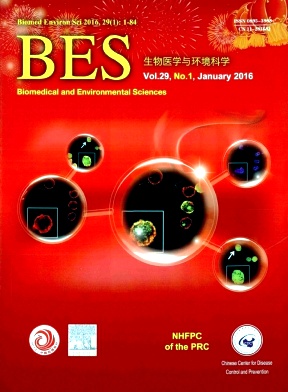Measures of Abdominal Adiposity and Risk of Stroke:A Dose-Response Meta-analysis of Prospective Studies
doi: 10.3967/bes2016.002
-
Key words:
- Abdominal adiposity /
- Waist circumference /
- Waist-to-hip ratio /
- Waist-to-height ratio /
- Stroke /
- Cohort studies /
- Meta-analysis
Abstract: ObjectiveWaist circumference, waist-to-hip ratio and waist-to-height ratio, which are the indicators or measures of abdominal adiposity, have long been hypothesized to increase therisk of stroke; yet evidence accumulated till date is not conclusive. Here, we conducted a dose-response meta-analysis to summarize evidences of the association between these measures of abdominal adiposity and the risk of stroke. MethodsPubMed and Web of Science databases were searched from inception to May 2015. Two investigators independently conducted the study selection and data extraction. Dose-response relationships were assessed by the generalized least squares trend estimation, while the summaryeffect estimates were evaluated by the use of fixed- or random-effect models. Subgroup and sensitivity analyses were performed to assess the potential sources of heterogeneity and the robustness of the pooled estimation. Publication biasof the literaturewas evaluated usingBegg’s and Egger’s test. ResultsAltogether 15 prospective cohort studies were identified in this study. The summary of relative risks (95% confidence intervals) of stroke for the highest versus the lowest categories was 1.28 (1.18-1.40) for waist circumference, 1.32 (1.21-1.44) for waist-to-hip ratio, and 1.49 (1.24-1.78) for waist-to-height ratio. For a 10-cm increase in waist circumference, the relative risk of stroke increased by 10%; for a 0.1-unit increase in waist-to-hip ratio, the relative risk increased by 16%; and for a 0.05-unit increase in waist-to-height ratio, the relative risk increased by 13%. There was evidence of a nonlinear association between waist-to-hip ratio and stroke risk,Pnonlinearity=0.028. ConclusionFindings from our meta-analysis indicated that waist circumference, waist-to-hip ratio, and waist-to-height ratio were positively associated with the risk of stroke, particularly ischemic stroke.
| Citation: | ZHONG Chong Ke, ZHONG Xiao Yan, XU Tan, ZHANG Yong Hong. Measures of Abdominal Adiposity and Risk of Stroke:A Dose-Response Meta-analysis of Prospective Studies[J]. Biomedical and Environmental Sciences, 2016, 29(1): 12-23. doi: 10.3967/bes2016.002 |







 Quick Links
Quick Links
 DownLoad:
DownLoad: